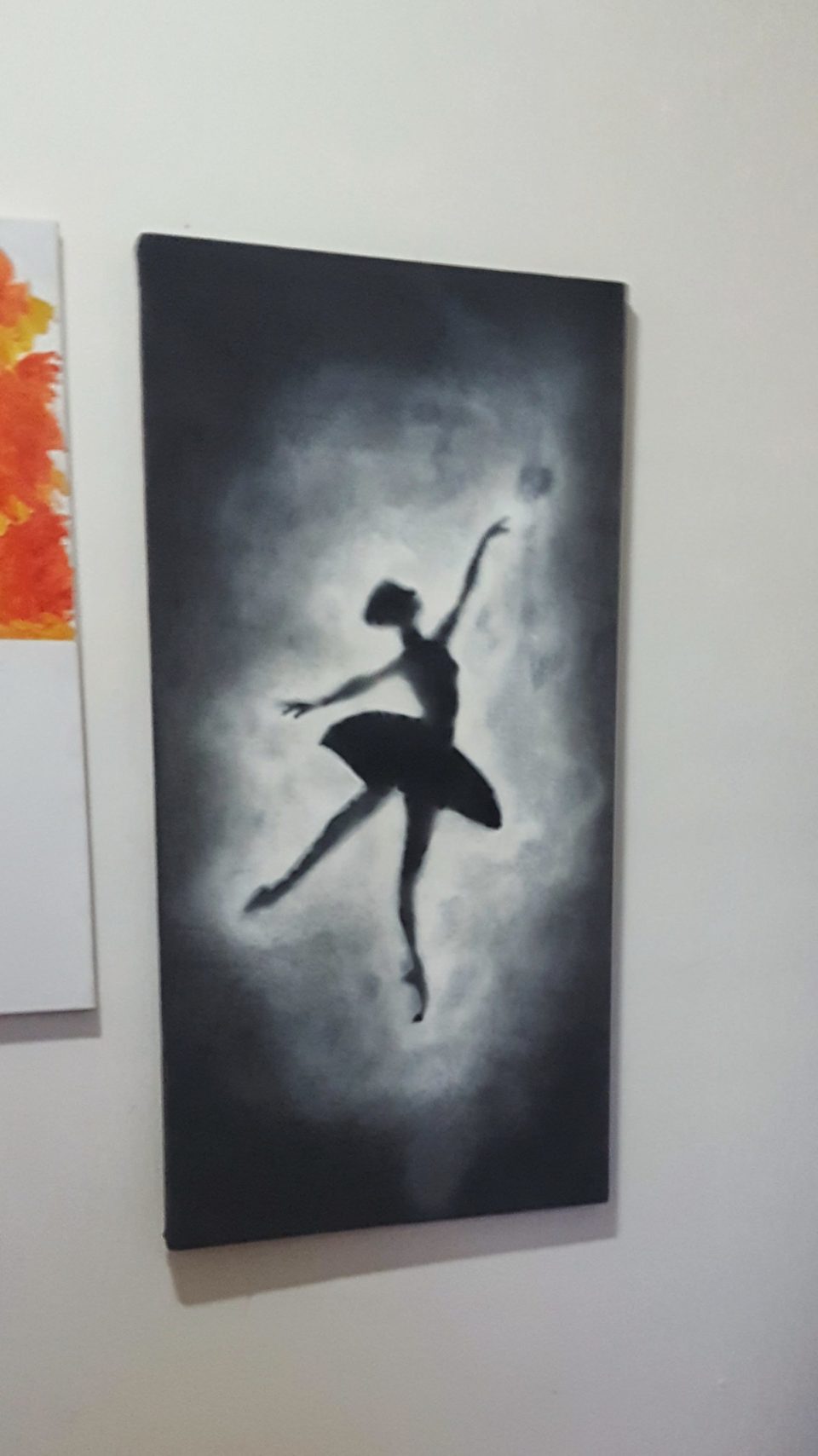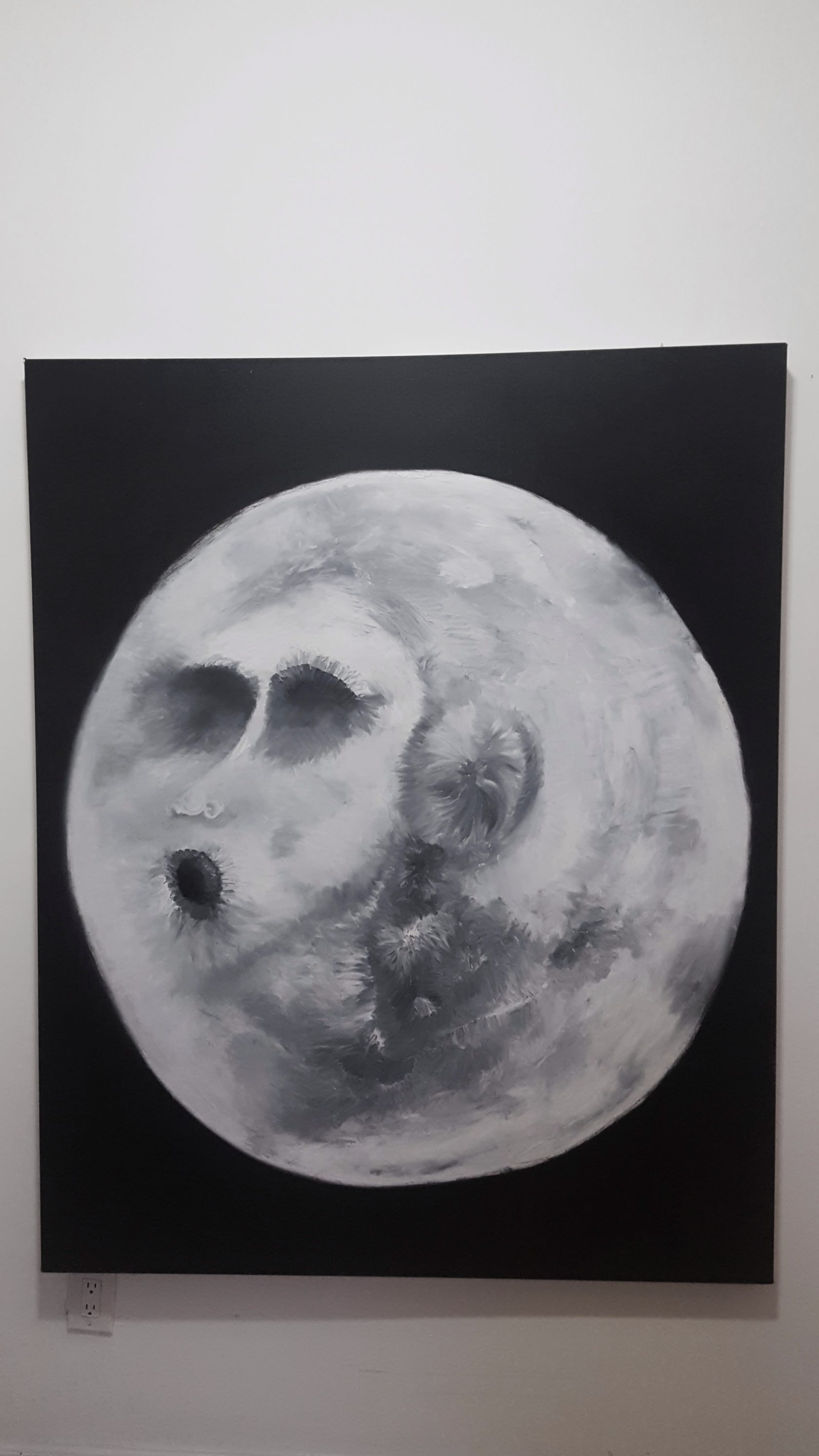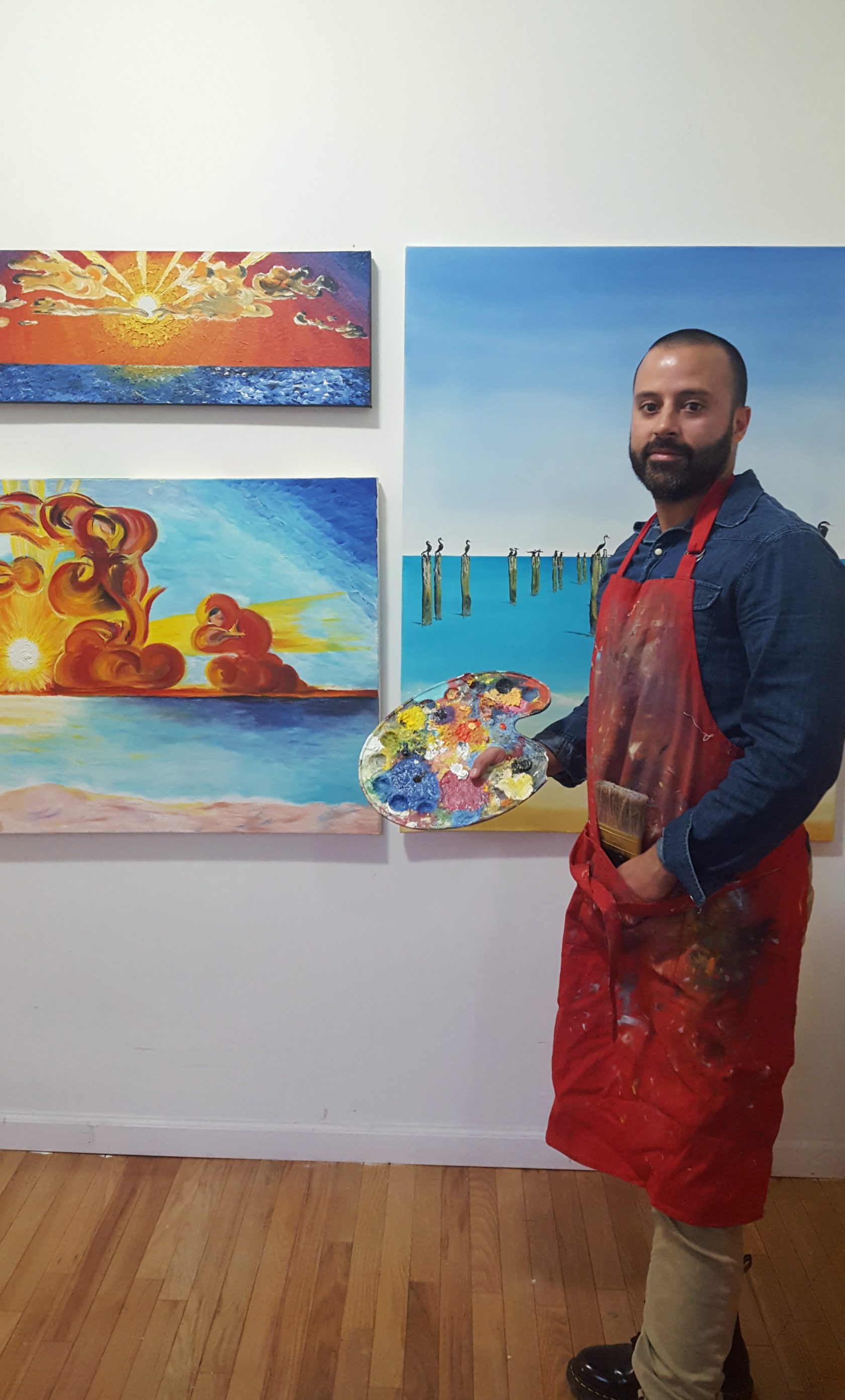
Juan Camilo Ospina Londoño is a native of Cartago, Colombia who moved to the United States at age ten and has called Jersey City his home for over four years. When he’s not painting, Juan also designs landscapes, teaches Capoeira, and spends time with his wife and two dogs, Basil and Lola. I visited Juan and his family at their home studio in The Village neighborhood of Jersey City to check out his paintings and learn more about his work, how his immigration story shaped his art, and the way he uses his talents for community service.
What is your style of painting?
I don’t consider myself to be defined by a style, since I like to explore all the time with different ideas and themes. I definitely have a list of painters that I love and study their work.
Who is inspiring you the most right now?
The list of those that I follow and love are typical to many, but to me they are so important… Dali, Picasso, Kahlo, Van Gogh, Hopper, Matisse, Da Vinci, Degas, Renoir, Monet, Goya, Cezanne, Manet, Pissaro, Kooning, Hokusai, and Rivera. There are other influences, especially more modern and contemporary artists, but these artists expressed everyday life in a way that I can relate to.
Do your works have any common themes?
There are moments in my life where themes commonly occur. It depends on what I am studying, for example drawing clouds was a theme for me for a bit, I stared and stared trying to get them right… I also have themes that derive from dreams that are ideas that I test and try. Right now I am in love with my ballerina. I am exploring this theme in different sizes, colors, and movement.

You’
ve described your ballerina paintings to represent the potential hope that exists around us. Can you tell us more about that?
The Ballerina is my latest series of paintings. She came from another work of art where I was exploring some serious political issues that were affecting me. She formed from the numerous drone bombings that occur daily… I cried one day thinking about those poor souls who cannot survive such a harsh event. I wondered about the innocent children who had dreams and hopes. So I started to paint out their dreams from the smoke that arose. It is a tribute to those unfortunate dreams, and I voice them to the world so they cannot forget about them. My first series captured a ballerina, a swan, and a horse. I didn’t want them to have a military theme, so the ballerina grew into a beautiful message of hope. I want the viewer to dream and hope for a better life. The ballerina makes me so content.
What else do you find yourself exploring in your art?
I love exploring the changes of color hues from one color to the other. Trying to pinpoint the moment when these colors come together. I also fell in love with the right blends of black with white and how they mix. I also love exploring different brushes and how they drag the oil across the canvas. This is important to me more so than the picture. It is the collection of these movements that really have me exploring art.
Tell us about your moon painting.
The moon and I have a strong relationship. It never fails to amaze me how it is always there, a constant. Before I moved to the United States as an immigrant, my parents moved first to establish roots, jobs, and housing. Those two years that I was without my parents were difficult as a young boy. My mom was the biggest thing missing, so I found the moon to be the face of my mother. I began to always send my thoughts to the moon, hoping that my mother would hear my thoughts wherever she was. I still think about her and see her face in the moon. I decided to explore this face in a 48”x 48” canvas. I wanted it to have an impact with its size, just the way the moon can look at certain moments of the evening. This painting was a sculpted piece where I used my fingers to create each stroke. It gave me an opportunity to study the depths of the craters of the moon. I studied the geography of the moon and tried to replicate it while portraying my mother the right way so I could see her always. It is one of my favorite pieces in my collection. I can stare at it for a long time and always find a new movement that I hadn’t seen before.
You’re involved in giving back to the community, particularly with the annual 9/11 memorial display that you create for the Jersey City Fire Department. How did that get started?
My first year in Jersey City back in 2012, no one did anything for the two pieces of steel anchored in front of the firehouse that were from the Twin Towers. I felt so sad for those who suffered and those who serve to keep us safe. So the second year, on September 11th, I took it upon myself to buy mums and decorate the firehouse on the night of September 10th. I wanted Jersey City to wake up and pay respect to the memorial. Those pieces of steel are interwoven with those that perished, those that survived, and those of us who care about and adore our brothers and sisters. 9/11 was a big part of my life. I went to school in Manhattan and that day was very serious. Those days and nights were long for so many. The first year, my wife and two friends helped adorn the memorial with mums. In 2014, we drew more support from the neighborhood where we had a collection of locals help carry mums several blocks in a connecting chain of love. I continue this tradition, and it keeps growing. This past year we were able to donate over 150 mums to dress up the area and they had a ceremony lead by a local priest. The firehouse awarded me with a certificate of appreciation. Yearly, I feel such warmth from these firemen. I do it for them.
What makes you get involved in these types of community service projects?
When I was 12, I remember my father pulling over to assist an elderly couple who had a flat tire. Without thought, he knew what he had to do. He simplified that elderly couple’s hardship. That frame stuck with me to this day. I am at an age in my life where I have the strength, patience, and financial understanding that allow me the opportunity to help others where I can. If we could all help each other, I feel we can all simplify life a bit. So I have been donating my services to many different causes. I have been so humbled by those who I have met along the way. I get involved because it is the right thing to do for those that could use a little help, a hug, or just company.
You
’re also involved in Capoeira. Tell us about that.
Capoeira is a martial art that arose in Brazil from the hardship of the slaves during the colonization period over 400 years ago. It helped slaves find a cause, taught them how to survive, and gave them a reason to endure the fury that is slavery. We pass along this tradition today and continue to remember the struggle that was endured by so many. I continue to learn and pass along my master’s teaching to others. I love the freedom that it gives me. It has the same feeling I have when I allow the painting hand to feel and trust the movement as I paint across a canvas. It is the same focus that creates flow.
Why do you think the arts have that special ability that no other medium has?
Art has no single definition. It is what each individual wants to make of it. Art has no formulas, no end and no beginning. It is a vast ocean, with waves that are neverrepeating. I think that art helps open up these mental doors that create space in people’s lives, which can positively change the individual. 
Where can we see your work?
You can see my work on Instagram as @juancamiloospina, check out my online portfolio at www.ospinalondonola.carbonmade.com or email me at ospinalondonola@gmail.com
Such a refreshing change to hear about this giving man and his art in these chaotic days. Thank you for sharing – it’s a great story.